If you are a lover of medical TV series, you must have heard the phrase, “charge 200…charge 300…clear!” You must have watched that scene where doctors and other medical practitioners battle to save a patient’s life. Such views don’t only exist in movies; they are real-life scenarios acted as movies.
There are cases where one’s heart collapses and goes into sudden cardiac arrest. In this case, it requires the use of emergency medical devices such as the defibrillator to save the person.
What is a defibrillator?
If you are new to this topic, you may be wondering what a defibrillator is. When the heart goes into a sudden cardiac arrest, it enters into some quivering mode, which is termed ‘ventricular fibrillation.
A defibrillator is a device used to jolt it out of that mode. It is a machine that sends a high-energy electric shock to the heart to restore it to its reasonable working condition .
Defibrillators are usually of two types.
- Automated external defibrillators (AEDs)
- Manual external defibrillators
Medical professionals in hospitals and paramedics in ambulances usually make use of manual external defibrillators. As a comparison, the automated external defibrillators are mostly placed for public access in public places such as at workplaces, train stations, etc. Both can achieve the same purpose - to cause defibrillation of the heart.
However, the AED is more comfortable and more convenient for people without a medical background to use. Unlike the manual external defibrillators, they often come with a pair of adhesive electrodes as well as a computerized system that analyses the heart rhythm and would tell the appropriate level of electrical shock that needs to pass it [1].
It means you don’t need to be medical personnel to use them and save a life. It only requires a minimal amount of training on device usage.
Even though you may not require much training before using this device, you don’t usually expect that you wake up in the morning, pick them up, and start using. There is a need to understand how it works first.
How exactly does an AED work?
Fibrillation is a significant symptom of a heart attack. It is a state of the erratic beating of the heart. AED, such as the Mindray BeneHeart Series, aims to stop that irregular beating of the heart. But how does this AED work?
This device does do so by generating a relatively high electrical current (up to 360 joules for some models of AEDs) and then passing it through to the heart. In this way, the heartbeat comes back to normal immediately.
People have this common misconception that they can use defibrillators even when the heart has stopped beating. No, it doesn’t work that way in fact. Once the heart starts beating (shown in the ECG machine as flat lines), the person is dead. Even though the AED has excellent capacities, saying that it restarts the heart is more like an exaggeration of what it can do [2].
The device doesn’t ‘restart the heart’ literally. Instead, it resets the natural pacemaker of the heart (which is what makes it beat with a regular rhythm), thus restoring the normal functioning of the heart.
The electrical energy used in generating the shock in defibrillators is produced by an in-built battery with a high-capacity capacitor, which goes on to release a massive pulse of energy. The energy is released into two wires, each with an ending electrode pad also called ‘defibrillation pad’. For the AED, the pads are adhesive, which means that they can be easily and quickly applied for use at any time by anyone. Since they are sticky, it also eliminates the need to hold the pads in place during use.
Where to place the pads?
Where you place the pads is quite essential as its correct placement would ensure that the electric current released can circulate all through the patient’s heart.
There are two correct places to place the pad.
Place one AED pad under the collarbone on the upper-right chest. Place the second AED pad near the left armpit on the patient’s lower ribcage.
In front and behind the heart (typically for children aged under 8)
There are quite a good number of AEDs you can purchase for you facility, or even for your personal use at home. People suffering from severe heart diseases can keep one handy in case of emergencies. You may be confused about which to purchase; however, when buying an AED, you should think of ease of use, effectiveness, and durability, whether it is for public facilities or for home use.
Mindray’s automated external defibrillators are quite easy to use; they come with needed accessories and offer all the standard features of the AED, plus a few additional smart functions. Let’s take a closer look at how these AEDs work.
How to use the AED?
Power on first: The first step is to place it near the patient, then switch it on. The new BeneHeart C Series AED makes it even easier: Once you open the lid, the device automatically powers on in 2 seconds without pressing a power button.
Apply the pads: Remove the patient’s upper clothing and expose the chest region. It would be best if you wiped it of any moisture before you place the pads in the right places, as already indicated above.
In an ideal resuscitation situation, there should be two people around. One can perform cardiopulmonary resuscitation (CPR) on the casualty. The other gets the AED ready for use. Incorporating both can increase the chances of survival. You should not stop the application of the CPR until the AED has been fully set in readiness for use [3].
Ensure that the victim is apparent then shock: It is crucial to know that no one touches the casualty or their clothing while delivering a shock to the cardiac muscles. This is because the electric current can go through the clothing, causing the other person to get shocked. Thus, the person handling the AED should look around the casualty and ensure that no one is in close contact with the injury. This is the part where he or she loudly says, “clear!” before pushing the shock button.
AED is very useful for saving lives, and the good news is that it is not complicated to operate. You don’t need extensive training before you can use one. Hopefully, this blog will give you insights into how an AED works.
Mindray offers a wide range of tools and accessories which are necessary for the effective and safe use of automated external defibrillators. Our products range from semi-/fully automated AEDs, the AED-Alert remote management system, to AED training tool kits, which all function optimally to help people properly make use of AEDs and manage them to its perfect working condition.
References:
[1] Chris Woodford, 2019. Defibrillators [Online]. Available at: https://www.explainthatstuff.com/defibrillators.html. (Accessed: 20 January 2020)
[2] EMS Safety. AED 101 [Online]. EMS Safety. Available at: https://www.emssafetyservices.com/how-to/aed-101/ (Accessed: 20 January 2020)


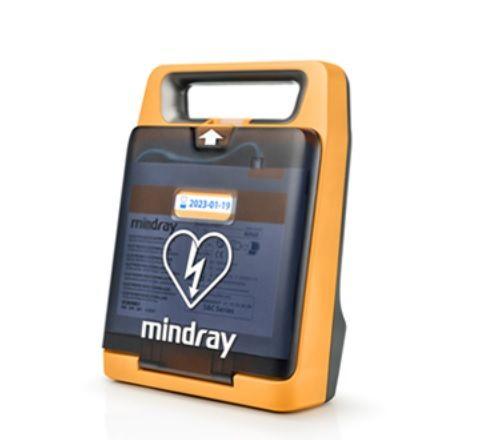

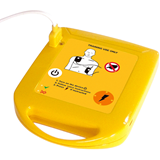


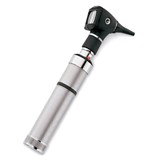
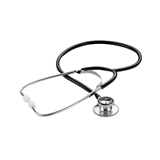
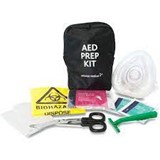
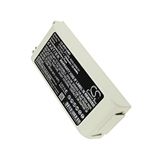
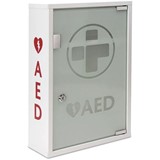
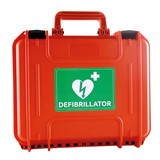

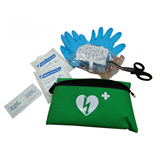

-205x205.jpg)
-205x205.jpg)

-205x205.jpg)
-205x205.jpg)





-205x205.jpg)
-205x205.jpg)
-205x205.jpg)
-205x205.jpg)
